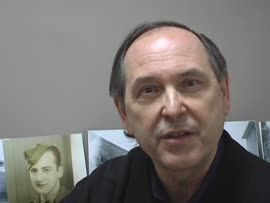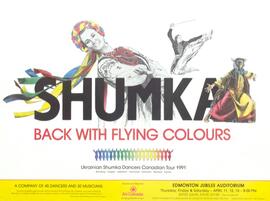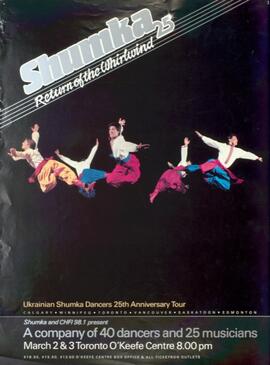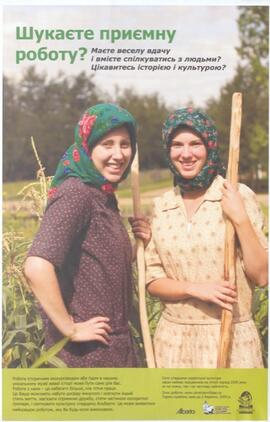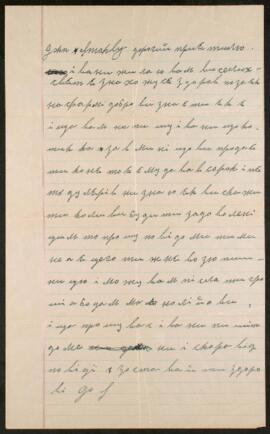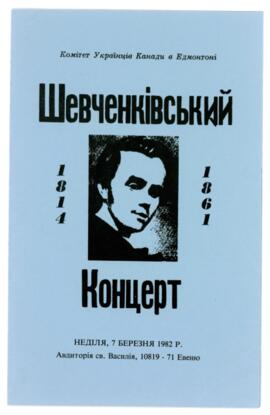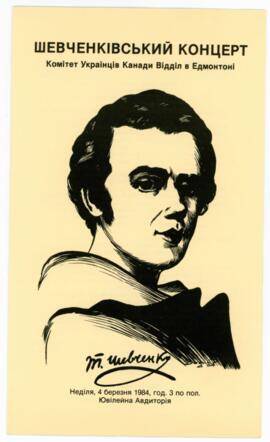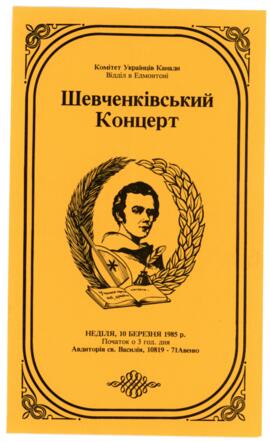Video performance excerpts for a contemporary original dance theatre work titled Shumka Remembers, conceived and directed by Gordon Gordey. Video excerpt contains commentary from Gordon Gordey at the Ukrainian Cultural Heritage Village, Alberta, Canada. This dancework was created for The Ukrainian Shumka Dancers of Canada. Shumka Remembers is a contemporary Ukrainian Canadian narrative folk dance theatre work with video exploring the unjust internment of Ukrainian Canadians as “enemy aliens” in Canada during WWI. These “enemy aliens” were subjected to having to carry registration identity papers, often pay monthly registration fees, and were under constant surveillance. Of the 80,000 who were registered under the authority of the Act, 8,579 were deemed: “enemy aliens”. The majority of “enemy aliens” were Ukrainians and were arrested and interned in 26 makeshift encampments located mostly in Canada’s frontier hinterlands. They were forced into hard labour clearing land for roads, building bridges, and building the railway.
Director's comment on the Sumka Remembers Dance - Ukrainian Canadian internment
Poster for Ukrainian Shumka Dancers Canadian tour 1991. Edmonton Jubilee Auditorium.
Edmonton, Jubilee Auditorium, 25th anniversary tour, 40 dancers with the Edmonton Symphony Orchestra, 2nd copy: at O'Keefe Centre, Toronto 40 dancers and 25 musicians.
Part 1: Born on September 29, 1901 in a town of Hlyzan’ (??) near Lviv; his wife is Olga Shulha (nee - Kashuba); attended a gymnasium in Lviv, interrupted by WWI; in 1914, Russian Army came, in 1915, Austrian Army returned; Paul was the eldest child; shkola kylymars’kykh vyrobiv in his town; in 1918, his father returned from the Italian front; Paul was studying in a Teachers Seminary; he was drafted into the Polish Army, telegraph school; military life; Halyts’ka armiia; fighting in Odessa; makhnivtsi; Tiutiunnyk; his army heading to Kyiv; being in a hospital with typhos; back to his regiment; Bessarabia; Red Army, internment in Proskuriv; returning home; came to Canada in March of 1927 (Gdansk - South Hampshire - St. Johns, NB).
Part 2: Paul came to Winnipeg; teaching at a Ridna shkola at Ivan Franko settlement; Transcona and its inhabitants; Het’mantsi; antagonism between Ukrainians in Canada; teaching to play musical instruments; moving to Regina in the 1930s; Ukrains’kyi narodnyi dim in Regina; Vasyl’ Veselovs’kyi (??); Paul teaching at the Narodnyi dim im. Shashkevycha; Strilets’ka hromada; womens section of the Strilets’ka hromada; publishing Robintsychi visti; brass orchestra; Shatul’s’kyi (??); Myrnam.
Part 3: Used to make musical instruments. Learned in the Old Country from his uncle. He was part of the music band there, and played violin. (They also played “Svatannia na Honcharivtsi”). He wanted his uncle to tune the violin, and he agreed if Paul would help him build instruments. He left Myrnam in 1931, went to Saskatoon; Babiy (??); Vasyl Hoitai (??); Fr. Savchuk; a trip on farm to distribute Novyi shliakh; Paul was a member of the Strilets’ka hromada; organizing UNO in Saskatoon; Kosar; Hryhorovych - the 1st Head of UNO; Bishop Makariy (??); Hryhorovych; Slipchenko (??); Communists in Saskatchewan were the strongest; Bozhok; Instytut Hrushevs’koho; Pohorets’kyi as the Editor of Novyi shliakh; Ukrainian community in Kenora.
Part 4: Denis Metel’s’kyi (??) organized a brass orchestra; Pashchyn (??); organizing concerts in 1931 in Sudbury; his orchestra was called “banda”; Prof. Bobers’kyi (??); Het’mantsi; concert at the UNO Congress; WWII, German sentiments at UNO; Fr. Jean (??); Sheptyts’kyi; after the end of WWII Paul returned to Kirkland Lake; Ridna shkola - Matviichuk’s textbooks.
Part 1: Nee - Kashuba; she is Orthodox, born on December 16, 1911 in Holobychok of Borshchiv povit; she came to Canada in 1924; her mother died when she was little, and her father was in the Austrian army but ran away to Canada in 1914; she came from Warsaw - Liverpool - Montreal, then to Mikado, SK; she attended school; her father opened a general store and remarried; Depression; Ukrainian area and school; assassination of Petliura; okolytsia Mazepa; she converted to Orthodoxy after priest’s words about Kyiv; Narodnyi dim in Mikado; she left Mikado in 1941; Latynnyky in Halychyna; holod in Ukraine 1933; her father subscribed Novyi shliakh; General Kapustians’kyi; Kurmanovych; concerts in Narodnyi dim; Remenda (??) family, Froliak (??) family.
Part 2: WWII - German sentiments; Ukrainians in the Canadian Army; Olha moved to Toronto in 1941, married there and the family had a business; her husband was Kul’chyts’kyi; difference between Ukrainians in the West and East in Canada; UNO; Fr Samets’ (??); Cathedral building in Toronto; Hryhoriak (??); DPs; Olha’s husband Pavlo; religious antagonism; Institute of St. Volodymyr.
Maiete Veselu Vdachui Vmiiete Spilkuvatys'z liud'my? Tsikavytes' istoriieiu I kul'turoiu. Picture of 2 Ukrainian women in a corn field.
Short essays: Folk beliefs - The World of Plants; Animal Folk Tales - Summery; The Apostles and the Saints - Summery; Magic Tales; Oleksa Dovbush in National Oral Works; Anecdotes; Riddles and Other Verbal Puzzles; Proverbs; Robert B. Klymasz, "Folk Narrative Among Ukrainian Canadians in Western Canada." Ottawa: National Museums of Canada, 1973; Stith Thomsons' The Folktale.
Popiwchak, Maria
